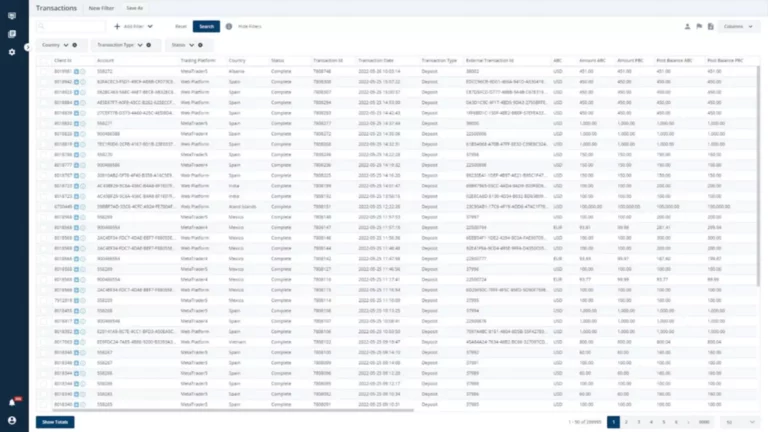Public Vs Private Blockchains: What Is The Difference?
In these networks, folks from all walks of life come collectively to validate and report transactions, they usually do this through something known as a consensus mechanism. This is kind of a digital voting system the place everyone has a say in confirming and securing the knowledge. So, in a nutshell, public blockchains are like the city sq. of the digital world, the place everybody can participate in preserving monitor of things in a clear and safe way. This controlled environment, nonetheless, permits for more environment friendly scalability and tailor-made governance buildings. Depending on the specified use case, each personal and public blockchains have their own benefits.

The Means Forward For Decentralized Innovation
In abstract, private blockchains function extra like a “walled backyard.” Only pre-approved participants can be part of public blockchain examples the network, engage in consensus, and skim or write information (e.g., create and execute sensible contracts). Hybrid blockchains are blockchains which are controlled by a single group, however with a stage of oversight performed by the basic public blockchain, which is required to perform certain transaction validations. An example of a hybrid blockchain is IBM Food Trust, which was developed to improve effectivity throughout the entire food supply chain.
Understanding how a public blockchain works will assist you to appreciate its essence. Unlike personal blockchains, which are restricted to a particular group of participants, public blockchains are open to anyone who desires to affix and take part within the network. Consortium Blockchain (also known as federated Blockchains) is greatest suited to organizations the place there is a need for each kinds of Blockchains, i.e., private and non-private. In this sort, there is more than one central in-charge, or we will say a couple of group involved who provides entry to pre-selected nodes for reading, writing, and auditing the Blockchain.
The centralized control raises considerations about potential manipulation by the governing entity. Moreover, the restricted access conflicts with the core ideas of decentralization that underpin blockchain know-how. When delving into the world of blockchain, non-public blockchains stand out as unique entities with a restricted access system. Think of them as unique clubs the place entry is limited to licensed people or entities. This managed entry grants the next level of privacy and security, making them perfect for sure enterprise purposes. A personal blockchain must be the go-to option if scalability and management are a precedence.
Not all types of blockchains are appropriate for provide chain information management. Many public blockchains contain the neighborhood in decision-making processes by way of governance mechanisms. Public blockchains are inclusive, allowing anyone to join the network, validate transactions, and contribute to the consensus course of. This permissionless nature empowers individuals worldwide to engage in activities such as mining. A public blockchain is a decentralized and transparent Mining pool ledger that operates on a peer-to-peer network. Transactions recorded on a public blockchain are everlasting and cannot be altered or deleted.

Public Vs Private Vs Permissioned: An Summary
This means anybody can have interaction in consensus processes and read or write information on the blockchain. Notable examples of public blockchains embody Bitcoin, Ethereum, and Kadena. The all-encompassing nature of public blockchains provides a chance to reimagine conventional shifts and settle for a future the place trust, security, and inclusivity do not rely on centralized authorities. Traditional techniques depend on a government to validate and document transactions, however public blockchains distribute this accountability throughout a community of nodes. In a public blockchain, users validate transactions that are then timestamped and shared publicly through consensus mechanisms.
How Do Public Blockchains Work?
This can hinder the blockchain’s agility and scalability, impacting its capacity to adapt to evolving wants. In this setup, a bunch of chosen entities be part of hands, forming a type of unique membership. These members run the present, verifying transactions, and managing the blockchain system collectively. Ethereum, for instance, took things further, adding good contracts into the combination, and these contracts aren’t your traditional paper-and-pen ones.
This collaborative nature fosters innovation and helps address potential vulnerabilities more effectively by way of a diverse pool of contributors. Public blockchains usually help good contracts, that are self-executing contracts with the phrases of the agreement instantly written into code. Smart contracts automatically enforce and execute the terms when predefined conditions are met.
New initiatives like Polkadot and Cosmos are selling cross-blockchain compatibility, allowing seamless communication and knowledge trade that can unlock new use cases and cross-industry collaboration. Businesses can tailor the level of access and management they want, adapting the blockchain to go properly with their particular wants. Also, as expertise advances, this adaptability becomes even more valuable, allowing for adjustments with out compromising security or effectivity. Consider a supply chain state of affairs where a luxury trend model utilizes blockchain. From the creation of garments to their arrival in shops, blockchain technology permits the model to trace every step transparently.
But that’s simply numbers on a non-public key with out any other identifying information tied to them. A commonplace checking account would have all the identifying data on a person or company. Further, banks hold information similar to name, address, SSN, and other sensitive details. At Moralis, we’ve empowered greater than a hundred,000 companies to build, launch, and scale initiatives. With Moralis’ enterprise-grade APIs, including the NFT API, Solana API, and EVM API, you possibly can access all kinds https://www.xcritical.com/ of knowledge across most blockchains. The range of latest providers and functions that have emerged up to now yr alone is staggering, as is the pace at which blockchain has been adopted by enterprises and businesses the world over.
- Public blockchain technology is changing into increasingly more secure every day as extra nodes join the community.
- Consider a provide chain state of affairs the place a luxurious fashion model utilizes blockchain.
- Hybrid blockchains, blending public and private features, cater to businesses looking for a balance.
The Bitcoin blockchain was first created in 2009 by the pseudonymous developer(s) Satoshi Nakamoto, the unique pioneer of blockchain technology. However, the only operate the Bitcoin blockchain is designed to carry out is to ship money from wallet A to wallet B. More than a decade later, the Lightning Network went live as a second layer scaling resolution for quicker transactions on high of the Bitcoin chain. As the Federal Reserve’s research on tokenized assets illustrates, public blockchains are increasingly used for regulated monetary actions such as bond issuance.
These issues are changing how we do a bunch of stuff, like making provide chains smoother or fixing how we vote. Public blockchains, you realize, those decentralized networks, are letting regular folks and communities get in on the motion. Transactions on public blockchains are visible to all members in the community. This transparency fosters belief among customers, as they will independently verify and validate transactions with out relying on a central entity. Unlike conventional centralized methods, public blockchains distribute management and authority among a network of nodes.


